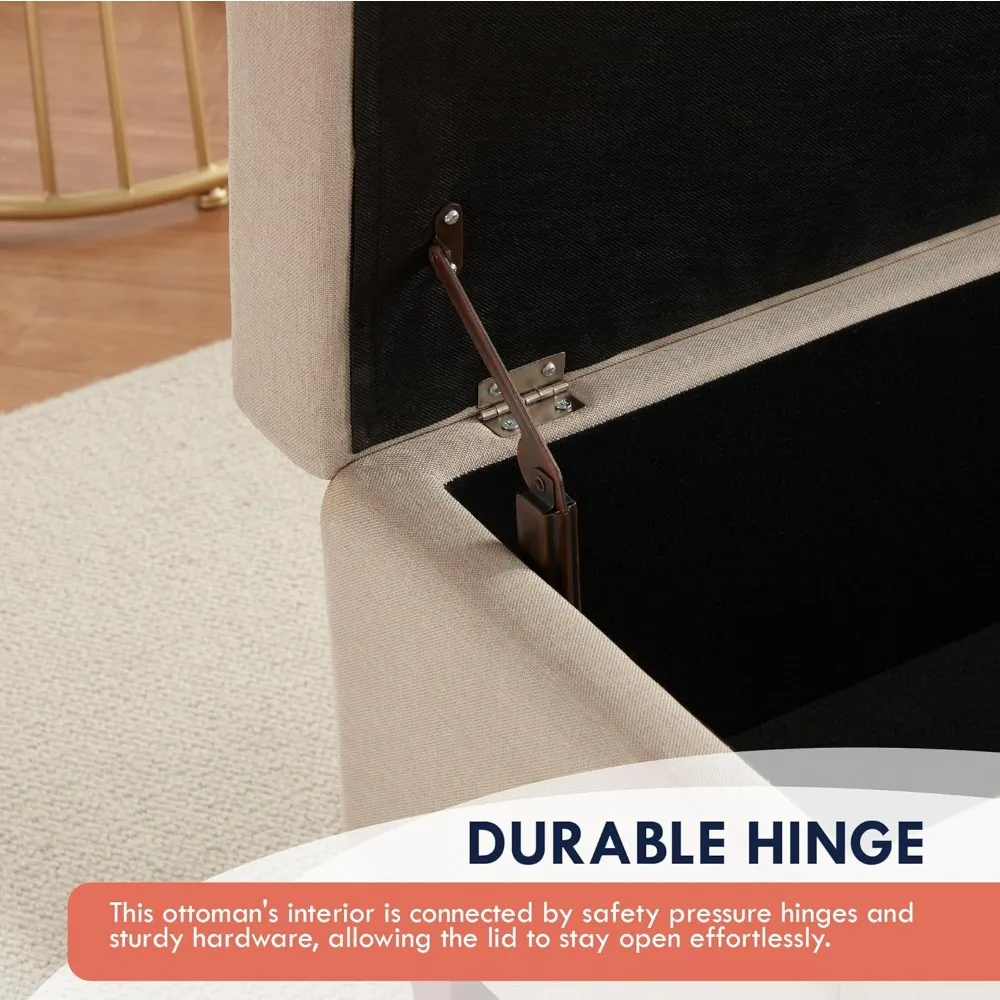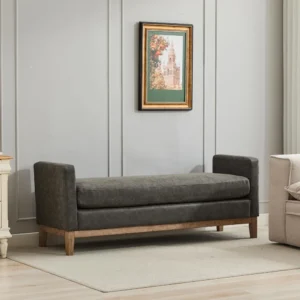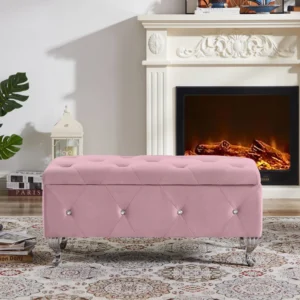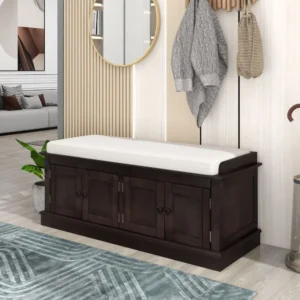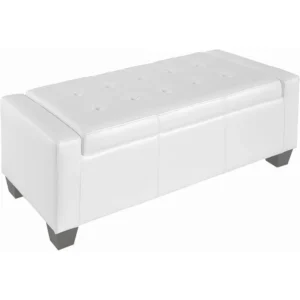Why Entry Bench Cushions Need Specially Selected Fabrics
The entryway of your home serves as more than just a transitional space—it’s the first impression guests receive and a high-traffic area that experiences consistent daily use. Entry bench cushions face unique challenges that standard upholstery simply cannot withstand long-term. These cushions must endure frequent sitting and standing, seasonal elements tracked in from outdoors, and constant exposure to everything from wet umbrellas to muddy paws.
What makes entry benches particularly demanding environments for fabrics?
- Heavy daily use with an average of 8-12 sits per day in a typical household
- Exposure to outdoor elements like rain, snow, sand, and mud
- Temperature and humidity fluctuations from opening and closing doors
- Potential for spills as items are transferred from outdoors to indoors
- Contact with outdoor clothing that may contain dirt, oils, or abrasives
Finding the right fabric for your entry bench cushion requires balancing aesthetic appeal with practical functionality. The perfect fabric should complement your home’s design while standing up to the rigors of daily use. Smart fabric selection for these space-saving entryway benches can dramatically extend the life of your cushions while maintaining their appearance.
When selecting fabric for your entry area, consider not just how it looks today, but how it will perform over years of consistent use. The right choice will transform your entryway from a purely functional space into one that maintains its appeal despite heavy traffic. Whether you’re looking at entryway bench cushions for a new purchase or reupholstering an existing piece, understanding fabric durability is essential.
Understanding Fabric Durability Metrics for High-Traffic Areas
When shopping for entry bench cushion fabrics, you’ll encounter technical terms that measure durability. Understanding these metrics helps you make an informed choice beyond simply how a fabric looks or feels.
Abrasion Resistance Testing
The gold standard for measuring fabric durability is abrasion resistance testing, which simulates the wear and tear of everyday use:
Wyzenbeek Test: The North American standard that measures how many “double rubs” a fabric can withstand before showing wear. A wire mesh or cotton duck fabric is rubbed back and forth against the test fabric until it shows noticeable wear.
Martindale Test: The European standard that counts the number of circular rubbing motions a fabric can withstand before showing wear.
For entry bench applications specifically, look for these recommended minimums:
| Usage Level | Wyzenbeek (double rubs) | Martindale (cycles) |
|---|---|---|
| Light use (formal entry) | 15,000+ | 20,000+ |
| Medium use (standard household) | 25,000+ | 30,000+ |
| Heavy use (active family) | 30,000+ | 40,000+ |
| Extreme use (pets, children) | 50,000+ | 60,000+ |
Beyond Abrasion: Other Key Performance Factors
While abrasion resistance is important, several other characteristics determine how well a fabric will perform in your entryway:
- Stain Resistance: How easily liquids and soils can be removed without leaving permanent marks.
- Moisture Resistance: How well the fabric repels or sheds water rather than absorbing it.
- Colorfastness: How well the fabric maintains its color despite exposure to sunlight, cleaning, and general use.
- Breathability: How well air circulates through the fabric, preventing moisture buildup and odors.
Performance fabrics represent a significant advancement in textile technology. Unlike standard upholstery fabrics, performance options incorporate protective features either within the fiber itself or through special treatments that become part of the fabric. This integration means the protective qualities won’t wash away or diminish significantly over time.
The construction method also impacts durability. Tightly woven fabrics with higher thread counts typically offer better resistance to wear, while certain weave patterns provide natural stain and water resistance. When organizing a small entryway bench, selecting the right fabric can enhance both functionality and longevity.
Top 10 Durable Fabrics for Entry Bench Cushions
1. Solution-Dyed Acrylic (Sunbrella, Outdura)
Solution-dyed acrylic fabrics stand at the forefront of durable textile technology. Unlike conventional fabrics where color is applied to the surface, solution-dyed acrylics incorporate color directly into the fiber before it’s even woven. This process creates color that permeates the entire fiber rather than just coating it.
Pros:
– Exceptional fade resistance, even in sunny entryways
– Superior stain resistance to both water and oil-based spills
– Maintains appearance after cleaning with bleach solutions
– Available in designer colors and patterns for any decor style
– Soft, cotton-like texture unlike older outdoor fabrics
Cons:
– Premium price point
– Some varieties can feel slightly stiff until broken in
– Limited selection in very plush or stretchy textures
Ideal Uses: Sun-exposed entryways, homes with children, areas near swimming pools or beaches where moisture is a concern.
Care Tips: Most spills clean easily with mild soap and water. For tough stains, diluted bleach solution can be used without harming the fabric’s appearance.
With typical abrasion test ratings between 30,000-50,000+ double rubs, these fabrics are built to withstand years of heavy use in your entryway. Their ability to maintain appearance despite environmental challenges makes them perfect for shoe bench cushions that see constant traffic.
2. Crypton Performance Fabrics
Crypton represents a revolutionary approach to fabric protection with an integrated system that provides moisture, stain, odor, and bacterial resistance in one comprehensive package.
Pros:
– Complete liquid barrier that prevents moisture penetration
– Resists odors and inhibits bacterial growth
– Available in a wide variety of textures and styles
– Maintains softness despite protective qualities
– Greenguard certified for indoor air quality
Cons:
– Higher price point than standard upholstery fabrics
– Can have a slightly different hand feel than untreated fabrics
– Some varieties may have less breathability
Ideal Uses: Homes with young children, pet owners, allergy sufferers, and households where spills occur frequently.
Care Tips: Most spills wipe away with a clean cloth. More stubborn stains respond well to mild soap and water or specialized Crypton cleaners.
Crypton fabrics undergo rigorous testing and typically exceed 50,000 double rubs, making them one of the most durable options available. The additional antimicrobial protection makes these fabrics exceptionally well-suited for homes with allergy concerns or young children.
3. Olefin (Polypropylene)
Olefin fabric offers inherent stain resistance without requiring additional chemical treatments, making it both durable and environmentally friendly.
Pros:
– Naturally stain resistant without added chemicals
– Excellent colorfastness and minimal fading
– Water-resistant properties
– Typically lower price point than other performance fabrics
– Recyclable material with lower environmental impact
Cons:
– Can be prone to pilling with heavy use
– Limited luxury feel compared to some alternatives
– May have static electricity issues in very dry environments
Ideal Uses: All-season entries, budget-conscious households, environmentally conscious consumers.
Care Tips: Regular vacuuming and prompt spot cleaning with mild soap and water. Avoid high heat which can damage fibers.
With abrasion resistance typically ranging from 25,000-50,000 double rubs, olefin provides excellent durability at a more accessible price point. Its inherent resistance to staining makes it particularly valuable in entryways where dirt and moisture are common challenges.
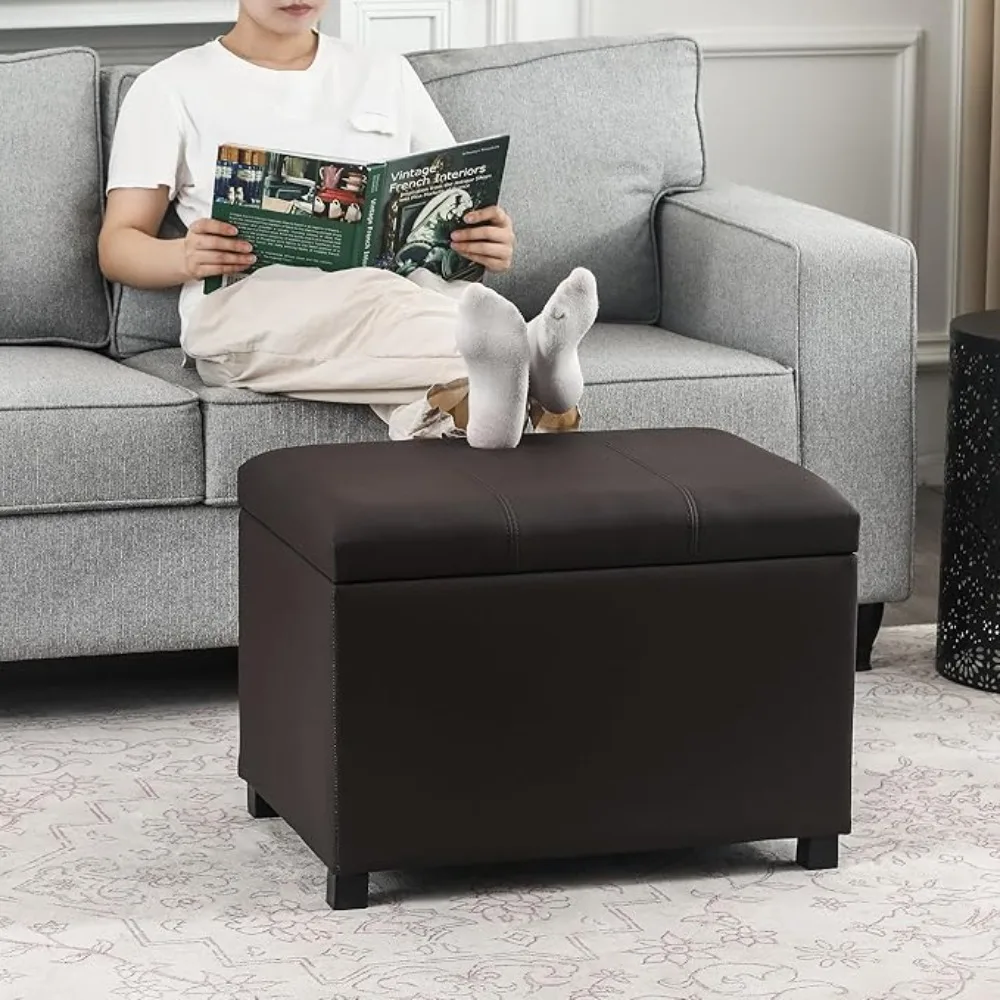
4. Microfiber
Microfiber’s tightly woven structure of ultra-fine polyester fibers creates a protective barrier against stains while maintaining a soft, inviting texture.
Pros:
– Exceptional softness and comfort
– Resists liquid penetration due to dense construction
– Available in various textures including suede-like finishes
– Good value for performance delivered
– Colorfast and resistant to fading
Cons:
– Can show wear patterns in high-traffic areas
– May attract and hold dust and lint
– Some varieties can be difficult to spot clean
Ideal Uses: Family homes seeking comfort and practicality, pet-friendly spaces requiring regular cleaning.
Care Tips: Regular vacuuming with upholstery attachment. Most spills can be cleaned with water and mild soap, though some may require specialized microfiber cleaners.
Microfiber’s durability varies by construction quality, with better options offering 25,000-40,000 double rubs. Its ability to mimic more delicate fabrics while providing superior durability makes it perfect for creating welcoming yet practical entry spaces.
5. Leather and Faux Leather
Leather and its synthetic alternatives offer exceptional durability with distinctive aesthetic appeal that often improves with age.
Pros:
– Extremely easy to clean and maintain
– Develops unique character and patina over time (genuine leather)
– Highly resistant to punctures and tears
– Simple to wipe down after exposure to moisture
– Available in various finishes from matte to glossy
Cons:
– Can feel cold initially in winter months
– May show scratches (though often can be buffed out)
– Genuine leather requires occasional conditioning
– Some faux options may crack or peel over time
Ideal Uses: Sophisticated entryways, low-moisture environments, homes seeking a classic aesthetic.
Care Tips: Genuine leather benefits from regular dusting and occasional conditioning with leather-specific products. Faux leather can typically be cleaned with a damp cloth and mild soap.
Leather’s exceptional durability comes from its natural structure, while quality faux leather options are engineered for longevity with abrasion resistance often exceeding 100,000 double rubs. Both options create a sophisticated entry that withstands heavy use.
6. Commercial Grade Polyester Blends
Commercial grade polyester blends bring contract-level durability to residential settings, offering exceptional longevity for high-traffic areas.
Pros:
– Engineered specifically for heavy-duty applications
– Often treated with advanced stain repellents
– Excellent abrasion resistance
– Wide variety of colors and patterns available
– Good value for extreme durability needs
Cons:
– Some varieties may have a stiffer hand feel
– Limited options in luxury textures
– May lack the breathability of natural fibers
Ideal Uses: Extremely high-traffic entries, homes with multiple children or pets, rental properties.
Care Tips: Most commercial blends can be cleaned with standard upholstery cleaners. Always check manufacturer recommendations as some treatments require specific cleaning methods.
With typical abrasion ratings of 50,000-100,000+ double rubs, these fabrics are designed to withstand continuous use in commercial settings, making them perfect for the busiest home entryways. Look for blends containing at least 50% polyester for optimal performance.
7. Canvas and Duck Cloth
These heavy cotton fabrics offer a natural fiber option with impressive durability and a casual, timeless appeal.
Pros:
– Natural fiber option with excellent durability
– Becomes softer with use while maintaining strength
– Casual, timeless aesthetic
– Usually machine washable if removable
– Takes well to scotchgard and other aftermarket treatments
Cons:
– Less inherent stain resistance than synthetic options
– May shrink if improperly cleaned
– Can fade more quickly in direct sunlight
– May wrinkle more than synthetic alternatives
Ideal Uses: Casual or rustic entry spaces, removable cushions that can be laundered, spaces with natural design elements.
Care Tips: Many canvas cushion covers can be removed and machine washed in cold water. Spot clean with mild soap and water for non-removable covers.
The durability of canvas correlates directly with its weight, measured in ounces per square yard. Look for 10oz+ for light use and 14oz+ for heavy use applications. When properly cared for, these natural fabrics can last for years while developing a comfortable, lived-in appearance.
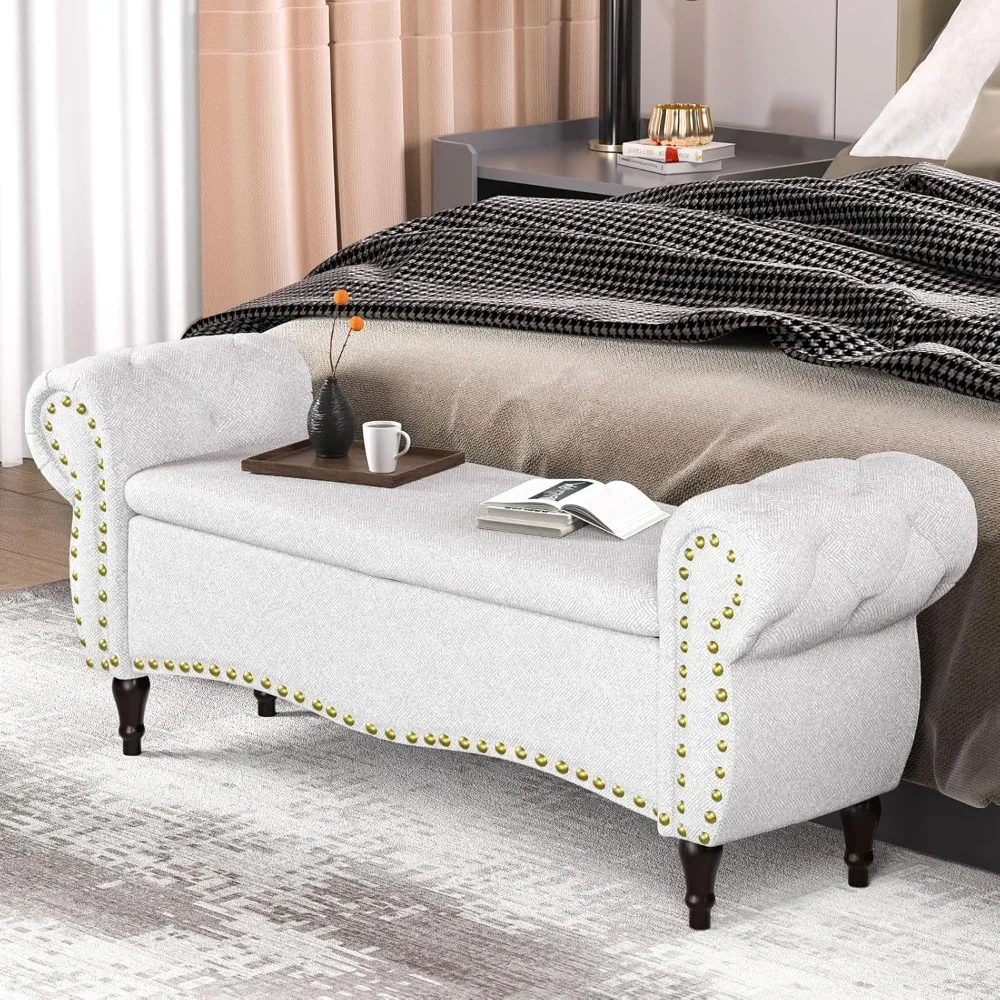
8. Ultrasuede and Performance Microsuedes
These innovative fabrics deliver the luxurious feel of suede with substantially improved durability and maintenance characteristics.
Pros:
– Exceptionally soft hand feel
– Resistant to stains and liquid penetration
– Non-woven construction resists fraying and wear
– Available in rich, vibrant colors
– Resists pilling better than many other soft fabrics
Cons:
– Premium price point
– Can show pressure marks that require brushing out
– Some varieties attract dust and lint
– Limited pattern options (mostly solid colors)
Ideal Uses: Luxury-feel entries without maintenance headaches, formal entries requiring a sophisticated texture.
Care Tips: Regular vacuuming with soft brush attachment. Most spills clean easily with water and mild soap. Some varieties can be cleaned with diluted alcohol for tough stains.
With abrasion test ratings often exceeding 100,000 double rubs (compared to natural suede’s typical 5,000-15,000), these fabrics provide exceptional durability despite their soft texture. Their resistance to liquid penetration makes them particularly valuable in entryways where moisture may be tracked in.
Entryway Bench with Cushion, Mudroom Bench with Cushion, Shoe Bench for Entryway
$1,186.63 Select options This product has multiple variants. The options may be chosen on the product pageCorner Entryway Bench, Entryway Bench with Cushion, Modern Entryway Bench, Shoe Bench for Entryway
$476.34 Select options This product has multiple variants. The options may be chosen on the product pageEntryway Bench with Cushion, Small Entryway Bench
$466.79 Select options This product has multiple variants. The options may be chosen on the product pageEntryway Bench with Cushion, Mudroom Bench with Cabinets, Shoe Bench for Entryway, Shoe Bench with Cushion
$991.71 Select options This product has multiple variants. The options may be chosen on the product pageEntryway Bench with Storage, Shoe Bench for Entryway
$487.70 Select options This product has multiple variants. The options may be chosen on the product pageShoe Bench for Entryway, Shoe Bench with Cushion
$344.66 Select options This product has multiple variants. The options may be chosen on the product page
9. Solution-Dyed Nylon
Solution-dyed nylon represents perhaps the ultimate in abrasion resistance, offering exceptional durability in even the most demanding applications.
Pros:
– Superior abrasion resistance (often 100,000+ double rubs)
– Excellent resilience that maintains appearance despite heavy use
– Strong resistance to crushing and matting
– Good stain resistance when properly treated
– Maintains appearance over extended periods
Cons:
– Can feel less soft than other options
– Limited selection for residential applications
– Often requires professional cleaning for best results
– Typically higher price point
Ideal Uses: Extremely high-traffic entries, multi-generational households, commercial-residential crossover spaces.
Care Tips: Regular vacuuming and prompt attention to spills. Professional cleaning recommended for significant soiling.
The exceptional durability of solution-dyed nylon makes it ideal for durable mudroom seating applications where performance is the primary concern. Its resilience helps cushions maintain their shape even with constant use.
10. Performance Velvet
Modern performance velvets deliver the luxury of traditional velvet with dramatically improved durability and maintenance characteristics.
Pros:
– Luxurious appearance and soft texture
– Engineered for significantly better durability than traditional velvet
– Often includes stain-resistant treatments
– Rich, vibrant color options
– Adds textural interest to entry spaces
Cons:
– Shows pressure marks and “hand prints” that require brushing
– Premium price point
– Requires more maintenance than some alternatives
– Can show wear patterns in high-traffic areas
Ideal Uses: Elegant entries requiring softness, formal spaces with adult households, seasonal homes.
Care Tips: Regular gentle vacuuming with brush attachment. Immediate blotting of spills with clean cloth. Professional cleaning recommended for significant soiling.
While traditional velvet might only achieve 10,000-20,000 double rubs, performance velvets often reach 30,000-50,000+, making them suitable for entryways with moderate traffic. Their ability to combine luxury with practicality makes them perfect for creating an elegant first impression.
Key Selection Factors Beyond Durability
While durability forms the foundation of good fabric selection for entry bench cushions, several other factors play important roles in finding your perfect match:
Strategic Color and Pattern Selection
The most durable fabric won’t look good long-term if it shows every bit of soil. Consider these strategic choices:
- Mid-tone colors hide soil better than very light or very dark options
- Marled or heathered fabrics that incorporate multiple similar shades naturally disguise small stains
- Small patterns or textures help camouflage spots and wear
- Colors that complement but don’t exactly match your flooring help hide tracked-in dust
Cushion Construction Considerations
The fabric represents only part of the cushion’s durability equation:
- Removable covers with quality zippers allow for easier cleaning
- Double-stitched seams prevent splitting under pressure
- Quality foam inserts with appropriate density maintain comfort and shape
- Waterproof inner liners provide additional protection
Practical Factors
Consider these practical aspects when making your selection:
- Budget ranges vary widely ($20-$200+ per yard) depending on fabric type
- Some specialty fabrics may require professional upholstering
- Testing samples in your actual entry space before purchasing allows you to assess appearance under your specific lighting
- Considering the expected lifespan of the bench relative to how long you’ll be in your home
The optimal fabric for your small entryway bench depends on balancing these factors against your specific needs and expectations. Taking time to evaluate beyond just aesthetics or initial price pays dividends in long-term satisfaction.
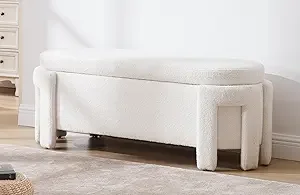
Caring for Your Entry Bench Cushions to Extend Lifespan
Even the most durable fabrics benefit from proper care routines. Implementing these practices can dramatically extend your cushion’s useful life:
Preventative Maintenance Schedule
- Vacuum weekly with an upholstery attachment to remove surface dust and debris
- Rotate cushions monthly if possible to distribute wear evenly
- Seasonal deep cleaning appropriate to your fabric type
- Immediate attention to spills and soiling
Spill Response Protocol
- Blot (don’t rub) liquids immediately with clean, white cloths
- Work from the outside of the spill inward to prevent spreading
- Use appropriate cleaning solutions based on fabric type and spill composition
- Allow to dry completely before resuming normal use
Understanding Fabric Cleaning Codes
Most fabrics come with cleaning codes that indicate appropriate methods:
- W: Clean with water-based solutions
- S: Clean with solvent-based cleaners only (dry clean)
- WS/SW: Either water or solvent cleaning is appropriate
- X: Vacuum only, no wet cleaning
Refreshing Between Cleanings
- Fabric freshener sprays designed for upholstery
- Baking soda sprinkled, left overnight, and vacuumed for odor control
- Gentle steaming (if appropriate for fabric type) to release wrinkles and freshen appearance
Professional cleaning every 1-2 years can revitalize even heavily used cushions and extend their useful life. Always consult care instructions specific to your fabric type before attempting any cleaning method.
Where to Source Quality Durable Fabrics for Entry Bench Cushions
Finding the right fabric for your entry bench cushion is easier than ever with these diverse options:
Specialty Fabric Retailers
- Online performance fabric specialists offering extensive collections with detailed specifications
- Fabric showrooms in design centers that allow hands-on evaluation
- Retail fabric chains with increasingly robust performance sections
Custom Upholstery Services
- Local upholsterers often have access to trade-only fabric lines
- Design services that can recommend appropriate options for your specific needs
- Workrooms that handle both fabric selection and cushion construction
Ready-Made Solutions
- Quality entryway bench storage options with pre-upholstered cushions in performance fabrics
- Replacement cushion specialists with durable fabric selections
- Custom cushion services that source both fabric and create finished products
When evaluating potential sources, always request samples before purchasing. Quality retailers will provide swatches that allow you to assess color, texture, and performance in your actual space. Most importantly, test the fabric’s stain resistance and cleanability with common household substances before committing to a larger purchase.
Fabric Selection for Special Entry Bench Scenarios
Outdoor-Adjacent Entries
For covered porches, sunrooms, or entries with direct outdoor access:
– Full marine-grade fabrics like Sunbrella offer maximum protection
– Solution-dyed acrylics with UV inhibitors prevent fading
– Vinyl or faux leather options provide easy cleanup from tracked-in elements
– Quick-dry foam options prevent mildew development
Pet-Friendly Fabrics
For homes with furry companions:
– Tightly woven fabrics resist claw snags and punctures
– Microfiber and ultrasuede naturally resist pet hair adhesion
– Crypton and other antimicrobial fabrics control pet odors
– Darker patterns help conceal pet hair between cleanings
Child-Friendly Options
For families with young children:
– Crypton and similar technologies offer protection against inevitable spills
– Machine-washable covers provide practical maintenance options
– Fabrics free of harmful chemical treatments ensure safety
– Softer textures prevent scratches during active play
Allergy-Sensitive Households
For those with respiratory or skin sensitivities:
– Hypoallergenic synthetic fibers that resist dust mites
– Fabrics without added chemical treatments that may cause reactions
– Antimicrobial options that prevent mold and mildew development
– Easily cleanable surfaces that don’t trap allergens
Climate-Specific Considerations
For extreme environments:
– Moisture-wicking fabrics for humid regions prevent mildew
– Breathable options for comfort in warm climates
– Cozier textures like performance velvet add warmth in cold regions
– Fade-resistant choices for sun-exposed entries
The perfect mudroom bench cushion material varies based on these special circumstances. By identifying your specific challenges, you can select fabrics engineered to address those particular needs rather than compromising with general-purpose options.
By understanding both the technical aspects of fabric performance and the practical considerations of your specific entry area, you can select cushion fabrics that provide the perfect balance of style and functionality. The right choice will create an inviting first impression while standing up to the unique challenges that entryway furniture faces daily.

